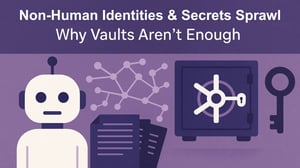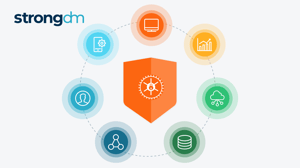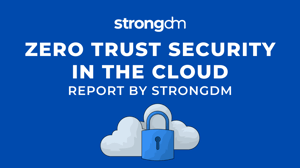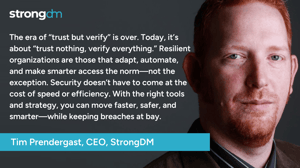Zero Trust vs. VPN: What Solution Is Right for You?
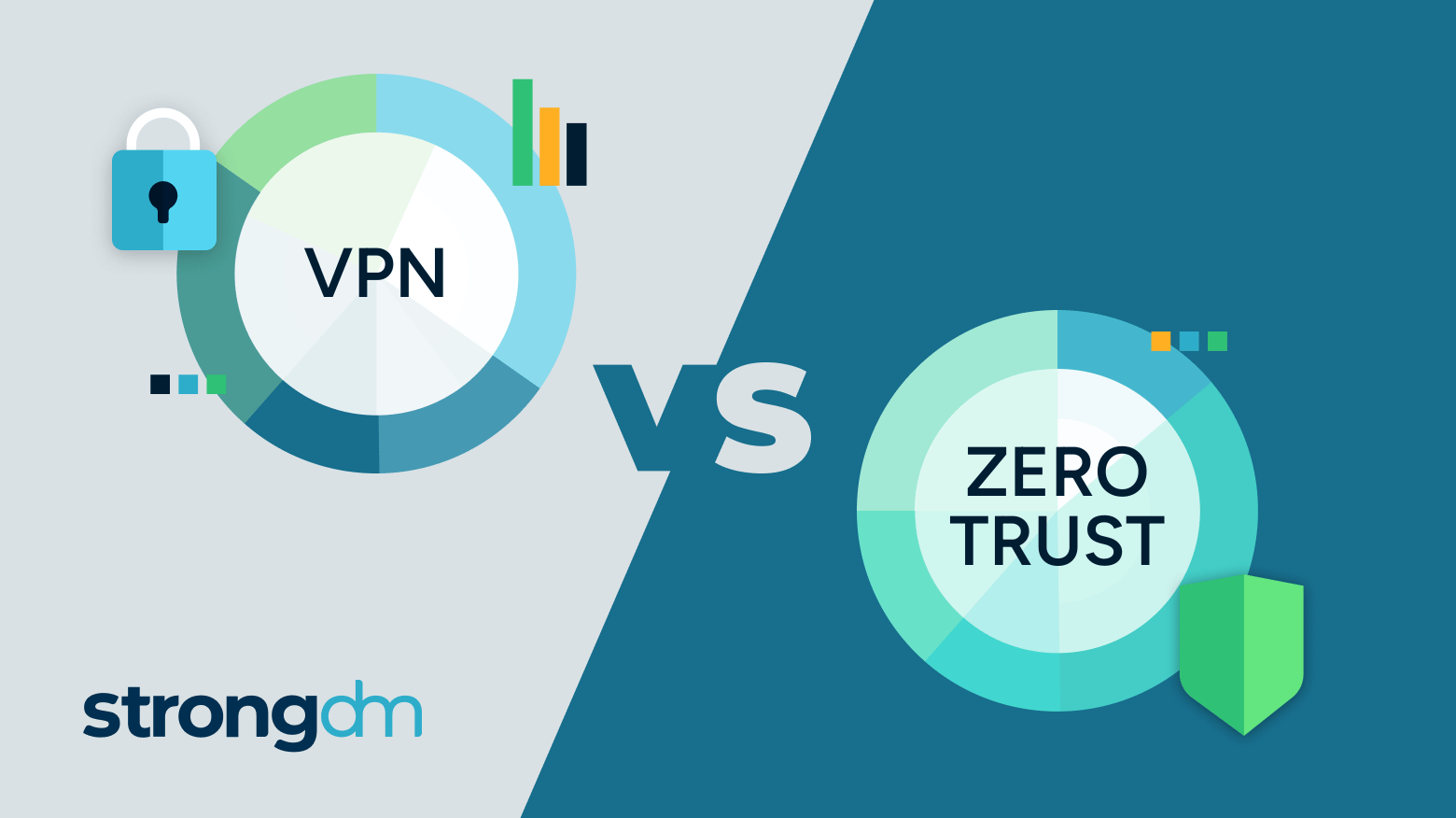

Written by
John MartinezLast updated on:
October 17, 2025Reading time:
Contents
Built for Security. Loved by Devs.
- Free Trial — No Credit Card Needed
- Full Access to All Features
- Trusted by the Fortune 100, early startups, and everyone in between
Understanding the core differences between a Zero Trust architecture and a Virtual Private Network (VPN) is an important step in shaping your organization’s cybersecurity strategy. Zero Trust and VPNs offer distinct approaches to security; knowing their functionalities and security philosophies helps you understand when to select one or the other to protect your data effectively—a strategic necessity for robust cybersecurity.
Zero Trust vs. VPN: What's the Difference?
Zero Trust is based on the principle of "never trust, always verify," requiring every access request to undergo rigorous validation, regardless of the requester's location. This approach ensures that security is maintained continuously across all points of access, effectively minimizing potential attack vectors.
On the other hand, VPNs secure your data by creating a protected pathway or "tunnel" between your device and the network, granting broader access post-authentication, which can expose the network to vulnerabilities if the initial defense is compromised. Key differences to understand include:
- Access control: Zero Trust scrutinizes every access request, continuously verifying identity and permissions, while a VPN provides access after the initial login, potentially leaving the network vulnerable to internal threats.
- Security philosophy: Zero Trust adopts a comprehensive security stance, assuming threats could be both inside and outside the network. VPNs, conversely, generally trust users once they are inside the network perimeter.
- Implementation complexity: Implementing Zero Trust requires an overhaul of your current security protocols and systems, integrating various security measures into a cohesive framework. Setting up a VPN is typically less complex and focused on establishing secure connections for remote access.
| Zero Trust | VPN | |
|---|---|---|
| Access Control | Continuous validation of every access request, scrutinizing identity and permissions. | Provides access after initial login, potentially leaving the network vulnerable. |
| Security Philosophy | "Never trust, always verify," assuming threats both inside and outside the network. | Trusts users once inside the network perimeter, focusing on securing the connection. |
| Implementation Complexity | Requires an overhaul of current security protocols and systems. | Generally simpler, focused on establishing secure connections for remote access. |
| Scalability | Offers superior scalability and management across various environments. | Scaling can be challenging, especially as the organization grows. |
| Security Risks | Minimizes attack vectors with continuous validation and dynamic access adjustments. | Broad access can be a vulnerability if a device is compromised. |
| Adaptability | Adaptive and responsive to emerging threats, continuously maintaining security. | Primarily secures data in transit, not inherently limiting internal access post-authentication. |
| Use Cases | Ideal for environments with highly sensitive data and dynamic IT setups. | Suitable for general remote access needs but less effective against sophisticated threats. |
| Compliance | Aligns well with strict regulatory standards, providing consistent and rigorous security measures. | May struggle to meet rigorous compliance needs due to broad access policies. |
| Privileged Access Management | Enhances PAM by dynamically managing and monitoring access based on real-time conditions. | Typically does not integrate as deeply with PAM strategies. |
While considering Zero Trust vs VPN for your security needs, note that while VPNs have long been the standard for remote access security, they may not offer the comprehensive defense required for complex cyber threats. Zero Trust presents a robust alternative because it continuously maintains security and dynamically adjusts access based on real-time risk analysis. This approach positions Zero Trust as a superior choice for organizations seeking stringent, adaptable security measures to protect their critical data and systems.
💡Get even more secure: Zero Trust PAM by StrongDM exemplifies the strength of Zero Trust architecture. Unlike traditional VPNs, which provide broad access to your network resources, StrongDM’s Zero Trust PAM ensures that your users are granted access only to the specific resources they need when they need them.
Challenges of Zero Trust vs VPN
Implementing either Zero Trust or a VPN solution is not without its challenges. Each solution has unique hurdles that require careful consideration to ensure they align with your organization's security needs and capabilities. These challenges can impact everything from system management to user experience and scalability.
Challenges of implementing Zero Trust
- System overhaul: Integrating Zero Trust requires rethinking and redesigning your existing security architectures, which can be resource-intensive.
- Complex management: Managing a Zero Trust environment is complex, as it demands continuous validation of credentials and permissions, which can strain IT resources.
- Continuous validation: All elements of your IT environment must be capable of supporting continuous validation processes to prevent disruptions in user experience.
Challenges of implementing VPNs:
- Scalability issues: As your organization grows and the perimeter expands to include more remote users and cloud services, scaling VPNs can become a technical challenge.
- Security risks: If not managed properly, VPNs can introduce significant security risks. They often provide broad network access, which can become a vulnerability if a device is compromised.
- Dependency on perimeter security: VPNs rely heavily on perimeter security, which can be inadequate against sophisticated cyber threats that breach your initial defenses.
Facing these challenges requires a clear understanding of your organization’s specific security needs and IT environment. Evaluate the benefits and drawbacks of Zero Trust vs VPN to decide which system — or perhaps both — will best protect your organization's assets.
💡Make it easy: If you’re concerned about the amount of work a Zero Trust implementation requires, platforms like StrongDM can make it simple by automating the nitty gritty details of access control. You can get automated policy enforcement, user provisioning, and logging and monitoring all in one tool.
Comparing Zero Trust vs. VPN in Security Implementations
Zero Trust and VPN differ significantly in managing data access, identity management, and overall network security. Zero Trust's approach to security is granular. It bases access decisions on a multitude of factors including:
- User identity
- Device security posture
- Sensitivity of the requested resources
This method drastically reduces the chance of unauthorized access and limits the potential damage from breaches.
VPNs provide a more generalized level of access control, which can expose your network to risks if an authenticated user or device becomes compromised. Although VPNs encrypt data in transit, protecting it from external eavesdroppers during transmission, they do not inherently limit access within the network once a user is authenticated.
💡Make it easy: Just-In-Time (JIT) Access by StrongDM addresses this critical vulnerability by granting temporary, time-limited access to resources only when needed. Once the access period expires, they are automatically logged out, and their access is revoked until it is needed again and reauthorized. This reduces the risk window.
The Benefits of Adopting Zero Trust vs VPN
Let’s look at some important reasons to adopt Zero Trust vs VPN.
Enhanced security measures
The Zero Trust model enhances your organizational security by adopting a more comprehensive approach to monitoring and validating every request to access your network resources. Continuous verification ensures that security measures are adaptive and responsive to emerging threats.
Scalability and management advantages
A Zero Trust architecture offers superior scalability and management benefits in modern IT environments. As your organization grows and your IT environment becomes more complex, Zero Trust security enables you to efficiently manage access across an array of cloud services, on-premises resources, and mobile environments.
💡Make it easy: Centralized Access Management by StrongDM significantly enhances scalability by providing a single platform to control and monitor access to all your critical systems. With StrongDM, you can easily manage user permissions and access policies from a central dashboard, regardless of your underlying infrastructure.
Use cases favoring Zero Trust
In scenarios where sensitive data must be rigorously protected or where your IT environment is highly dynamic, Zero Trust clearly outperforms traditional VPN solutions. Industries such as government, healthcare, and finance, which handle highly sensitive information, benefit greatly from the robust security framework offered by Zero Trust.
This architecture is also advantageous in highly distributed environments where users require flexible but secure access to network resources from various locations and devices.
💡Make it easy: If you’re ready to ditch VPN, do it the easy way. StrongDM’s comprehensive access control solutions enable seamless, secure, and auditable connections to your critical infrastructure from anywhere in the world.
Making the Transition: When to Consider Zero Trust vs VPN
Organizations considering a shift from VPN to Zero Trust should evaluate several factors to determine the best approach.
- Security requirements: Zero Trust provides rigorous security by verifying every access request, regardless of origin.
- Remote workforce: Zero Trust offers more granular control and secure access compared to VPNs. It doesn’t rely solely on initial access points but is maintained throughout the user interaction with network resources.
- IT complexity and resources: Zero Trust can simplify the security management of complex IT environments by segmenting access based on user roles and data sensitivity — VPNs might not scale as securely or efficiently.
- Compliance needs: In industries like healthcare, finance, and government, where compliance with strict regulatory standards is critical, adopting a Zero Trust architecture can significantly impact your ability to easily and consistently stay in compliance.
How Zero Trust Aligns with Privileged Access Management
Privileged Access Management (PAM) plays a critical role in securing access to systems and data by ensuring that access is restricted to those who genuinely need it to perform their roles. As businesses increasingly adopt a Zero Trust model, the need for robust PAM becomes even more pronounced.
Both Zero Trust and PAM operate under the principle that every individual must be verified and authenticated rigorously. But PAM isn’t enough alone — it must be supported by an organization-wide Zero Trust strategy that increases the span, granularity, and rigorousness of access control.
💡Dive deeper: StrongDM's approach to Zero Trust PAM integrates seamlessly with this philosophy by managing and monitoring privileged access dynamically. This means permissions and access rights are constantly adjusted based on real-time conditions, reducing the risk of over-provisioning and unauthorized access.
Move from VPN to StrongDM
As you evaluate your current security frameworks, it's clear that shifting to a more robust and adaptable system like Zero Trust vs VPN can substantially improve your overall security posture. This approach aligns with rigorous compliance requirements across various industries and offers enhanced control and visibility into your data access processes. By transitioning from traditional VPN solutions to Zero Trust, you position your organization to better manage and mitigate emerging cyber threats.
Replace your outdated VPN today and book a demo with StrongDM to explore how you can more effectively safeguard your organization's critical assets. Embrace a security solution that evolves with your needs and provides the comprehensive protection you require.
Next Steps
StrongDM unifies access management across databases, servers, clusters, and more—for IT, security, and DevOps teams.
- Learn how StrongDM works
- Book a personalized demo
- Start your free StrongDM trial

Categories:

About the Author
John Martinez, Technical Evangelist, has had a long 30+ year career in systems engineering and architecture, but has spent the last 13+ years working on the Cloud, and specifically, Cloud Security. He's currently the Technical Evangelist at StrongDM, taking the message of Zero Trust Privileged Access Management (PAM) to the world. As a practitioner, he architected and created cloud automation, DevOps, and security and compliance solutions at Netflix and Adobe. He worked closely with customers at Evident.io, where he was telling the world about how cloud security should be done at conferences, meetups and customer sessions. Before coming to StrongDM, he lead an innovations and solutions team at Palo Alto Networks, working across many of the company's security products.
You May Also Like
